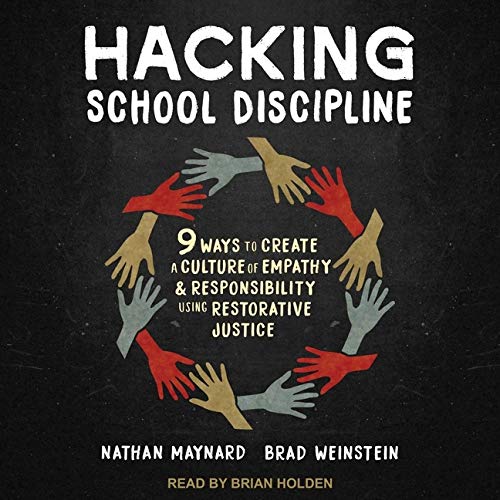What do you think?
Rate this book


Eliminate old-school punishments and create a community of responsible, productive learners
Are you or your teachers frustrated with carrots and sticks, detention rooms, and suspension--antiquated school discipline practices that simply do not work with the students entering our classrooms today? Our kids have complex needs, and we must empower and embrace them with restorative practices that not only change behaviors but transform students into productive citizens, accountable for their own actions.
Replace traditional school discipline with a proven system, founded on restorative justice
In a book that should become your new blueprint for school discipline, teachers, presenters, and school leaders Nathan Maynard and Brad Weinstein demonstrate how to eliminate punishment and build a culture of responsible students and independent learners. In Hack Learning Series Book 22, you learn to:
Reduce repeated negative behaviors Build student self-regulation and empathy Enhance communication and collaboration Identify the true cause of negative behaviors Use restorative circles to reflect on behaviors and discuss impactful change"Maynard and Weinstein provide practical tips and strategies in the context of real-world examples, guided by the imperatives of changing the behavior and preserving the relationship. An important read for teachers and administrators." -Danny Steele, award-winning principal and co-author of Essential Truths for Principals and Essential Truths for Teachers
Before you suspend another student ...
read Hacking School Discipline, and build a school environment that promotes responsible learners, who never need to be punished. Then watch learning soar, teachers smile, and your entire community rejoice.
Audio CD
First published March 11, 2019